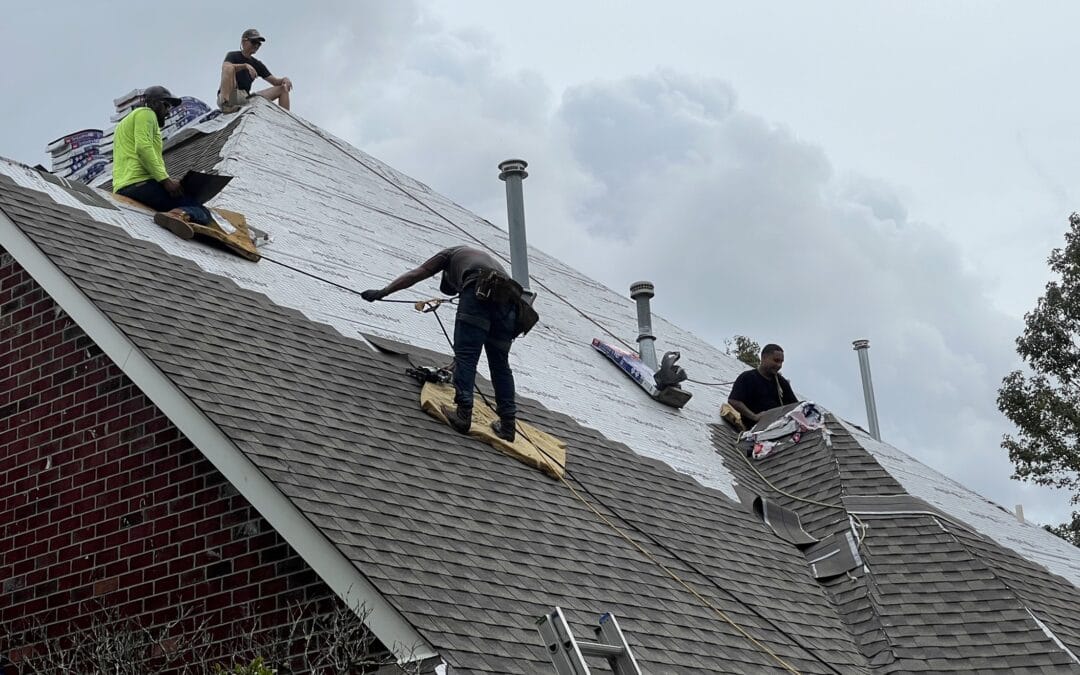Check out our list of roofing facts
Roofs seem like such a mundane, everyday thing. After all, everywhere you look, you see all kinds of roofs, and aside from interesting aesthetics, you likely pay them very little heed unless they’re very shabby or damaged. Sure, you pay your own roof a lot more attention than that – at least if you’re wise – but how much thought beyond the immediate, do you really give it?
There are quite a few misconceptions about roofs among most people, and these assumptions can be very problematic in many cases. Today, we’re going to look at the ten biggest misconceptions/important facts, and clear some things up. Having these things in mind, moving forward, will save you a lot of trouble in the long run when dealing with roofing services.
1. Your Location Determines the Roof You Have
You’ve probably noticed that certain types of roof are more common in certain areas. Clay/ceramic roofs are common in deserts and tropical climates, shake roofs are prolific in the pacific northwest and New England, shingle roofs in the more wildly temperate parts of the world. This isn’t just local color, it’s science.
Various types of roof work best in various types of climate, where they can insulate/deflect sun/maintain integrity against extremes, and resist the most common types of weather phenomena.
This goes not just for material though, with different types of slanted or hipped roofs being better at resisting strong winds, and highly-pitched roofs being excellent at handling heavy precipitation. You won’t see flat roofs as often, in areas with lots of rain and snow, or in heavily-forested areas.
2. Flat Roofs Aren’t Actually Flat
Flat roofs seem flat by comparison to other, very clearly-sloped/pitched roofs, but they’re not truly flat. There’s a slight incline, usually about ¼ inch per foot. Standing on it, you won’t notice it and neither will most roofers. This incline is necessary, to allow water to drain.
3. There’s More to a Roof than Shingles and Wood
Unless you’ve watched a roof built from the ground up, it may be easy to think of a roof as just wood and shingles. However, there are many layers of equally-important components to a roof. For example, there’s the deck (which supports the weight), an insulator barrier against rain and snow, metal flashing to guide water off the edges, the drip edge to complete that, and the shingles themselves.
There’s also a critical ventilation system, which we’ll discuss in more detail presently.
4. You Can’t Just Cover One Roof with Another
Simply building one roof over another sounds like it’d be a solid cost-cutting measure, but it’d actually be dangerous. For one, this allows the existing issues to remain present, and the decay of materials to spread to the new roof. For another, this extra weight could bring the whole thing down, and even cause your foundations to crack, and your walls to weaken!
5. Roofs are not DIY Projects
DIY construction projects are a good thing – it’s empowering, it’s educational, and it saves money. However, a roof is not one such project, unless you’ve been properly trained like a professional roofer. Roofs have to be installed with a lot of precision, meeting strict structural standards, both to meet building codes, and for quality/function. Don’t try this at home!
6. Roofs Need to Vent
We mentioned this a couple points ago – roofs have a critical ventilation system. Air flow helps to keep temperatures down, and to keep the moist air out. The result is the wood enduring longer, and the shingles and flashing staying intact better.
7. Roofs Can be Environmentally Smart
That’s right, there are “green” roofs, and they have a plethora of benefits. Primarily, materials good at trapping a house’s heat in the winter, and deflecting/radiating absorbed solar energy make it less stressful on your HVAC system, thus conserving power. This is a financial and environmentally-beneficial design so ask your roofer about it.
8. There are Professional Roof Cleaners
A lot of people neglect cleaning their roofs, thinking that the responsibility falls on them, and being on a roof is terrifying. However, professional, certified roof cleaning companies are a thing, and they have specialized tools, products, and practices to do it properly. They even have their own trade association, the Roof Cleaning Institute of America.
9. Bad Roofs Affect Resale Value
A faulty roof can ruin the curb appeal of a home (first impressions are everything), and it can severely damage resale value. In fact, a home can be condemned by inspectors, if a roof is in bad enough shape.
10. Roofs are (Almost) Immortal
Okay, so nothing lasts forever, but a well-built roof with sound materials can last a very, very long time. Depending on the materials, you can expect most residential roofs to last between 30-50 years, with some materials lasting up to a century, if there’s not enough stress put on them.

Recent Comments